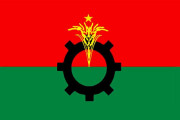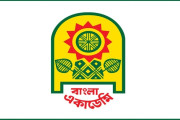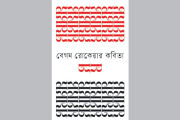Heavy discharge in the Sone river in the range of 57,000-60,000 cusec from Indrapuri barrage at Dehri is fuelling the surge in the Ganga which is also being fed heavily from north Bihar rivers like Gandak, Burhi Gandak, Bagmati, Kosi and Mahananda.
Subhash Pathak: Authorities in Patna have advised people not to bathe in the various ghats of the Ganga after it crossed the danger level at Gandhi Ghat and other places in Bihar’s capital city on Tuesday evening.
The river was flowing about 21 cm above the danger level of 41.76 metre at Hathidan in Mokama and 11cm above the red mark at Gandhi Ghat in Patna.
“The water-level of Ganga has risen 5cm in the last 12 hours at Gandhi Ghat, which has a danger level of 48.60 metres,” said a water resources department official. He cautioned that the river might rise in days to come along its course in Bihar.
Heavy discharge in the Sone river in the range of 57,000-60,000 cusec from Indrapuri barrage at Dehri is fuelling the surge in the Ganga which is also being fed heavily from north Bihar rivers like Gandak, Burhi Gandak, Bagmati, Kosi and Mahananda at different points.
“Bihar is facing unprecedented discharge of water from Nepal side due to heavy rains in catchment areas of Ganga’s tributary. Sustained heavy release of water in Burhi Gandak has rendered its left embankment at Bela Chamrahi in Begusarai vulnerable. Teams of engineers along with local people are working overtime to protect it,” said water resources development minister Sanjay Kumar Jha.
Lauding the role of the locals in helping the department to carry out flood fighting work, the minister said that a timely alarm from local people about a breach in the embankment at Kaluaghat on the Bagmati river had prevented the embankment from being washed away.
“We have deployed an early warning system to take preventive steps on embankments,” said Jha.
The minister also said that the officials failed to understand the gravity of the situation on Gandak and hence the embankments were damaged.
Citing chief minister Nitish Kumar’s demand for a national-level policy on silt management, which was also taken up during PM Narendra Modi’s meeting with the chief ministers, Jha said that heavy release of silt in Ganga and its tributaries had exposed Bihar to recurring floods.
“Although we have proposed a lot of measures to check silt in various rivers by resorting to heavy plantation on their banks, a national-level approach for silt management is the need of the hour,” he said.
Jha said various studies carried out on the problem of silt in the Ganga basin have abundantly made it clear that the state would continue to grapple with floods until the Farakka barrage is rebuilt with new technology to deal with heavy deposit of silt in the river.
“Ganga water takes around 8-9 days to reach Farakka from Patna, which earlier took three days,” said Jha.
Meanwhile, rivers like Bagmati, Burhi Gandak, Khiroi and Ghagra continue to flow above the danger level at different places in Sitamarhi, Samastipur, Darbhanga and Siwan.
So far, more than 81.59 lakh people in 1,312 panchayats of 130 blocks of 16 districts have been hit by the floods. The current spell of floods has claimed 25 lives across the state, the disaster management department said in a press note.
The floods in Bihar have impacted Darbhanga and Muzaffarpur districts the most, with 20.61 lakh people and 19.18 lakh people affected, respectively. In East Champaran district, over 10 lakh people were hit.










































































































































































